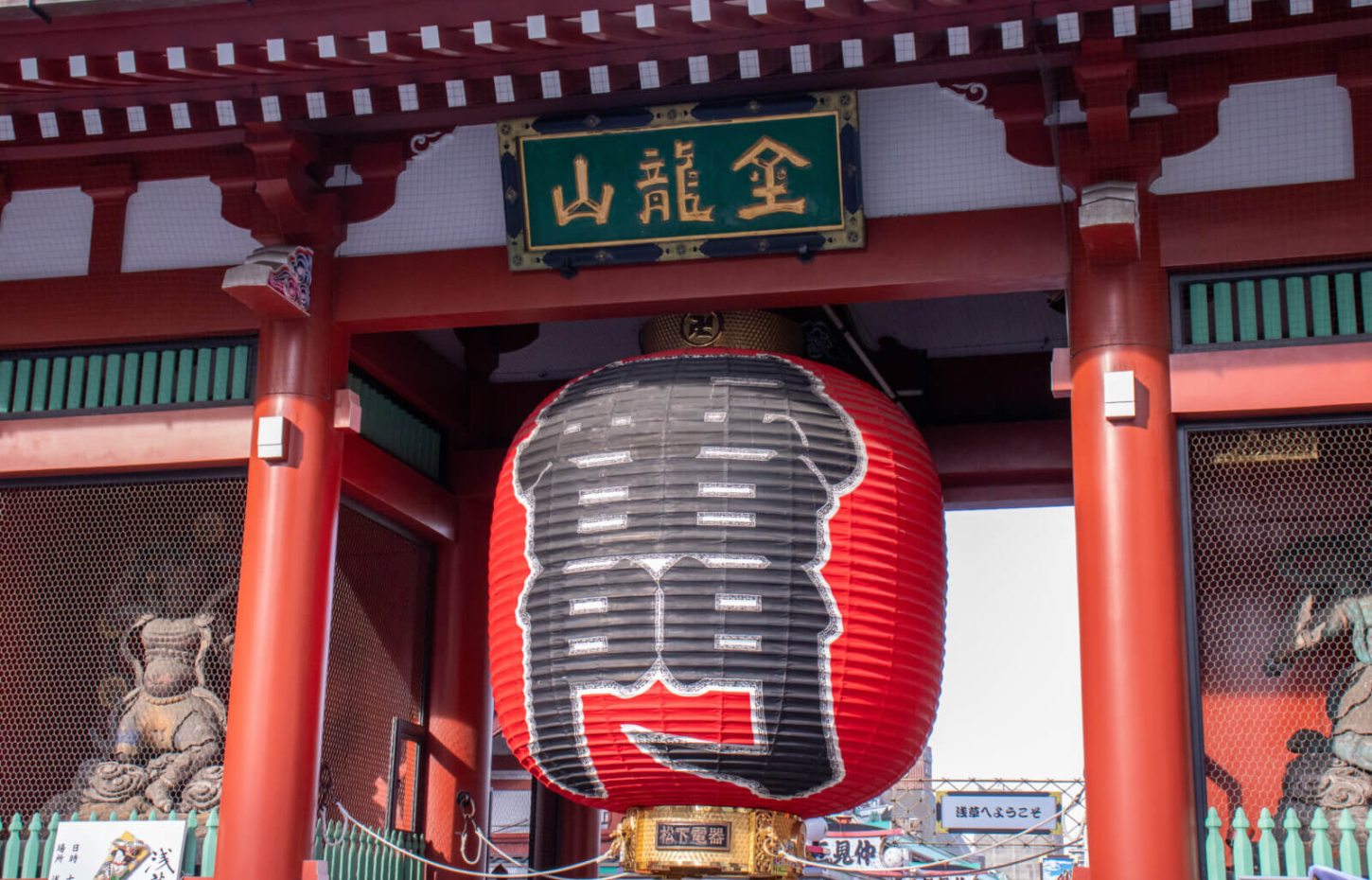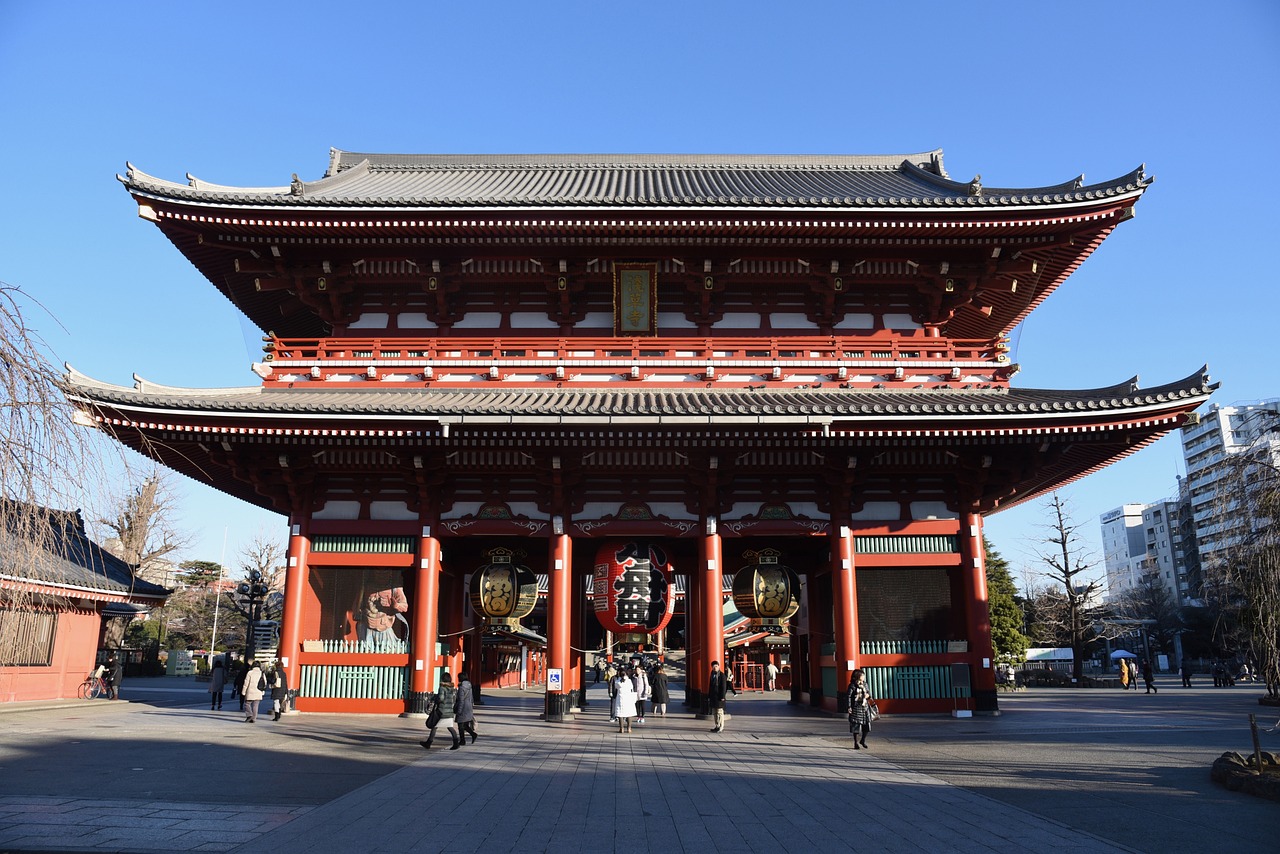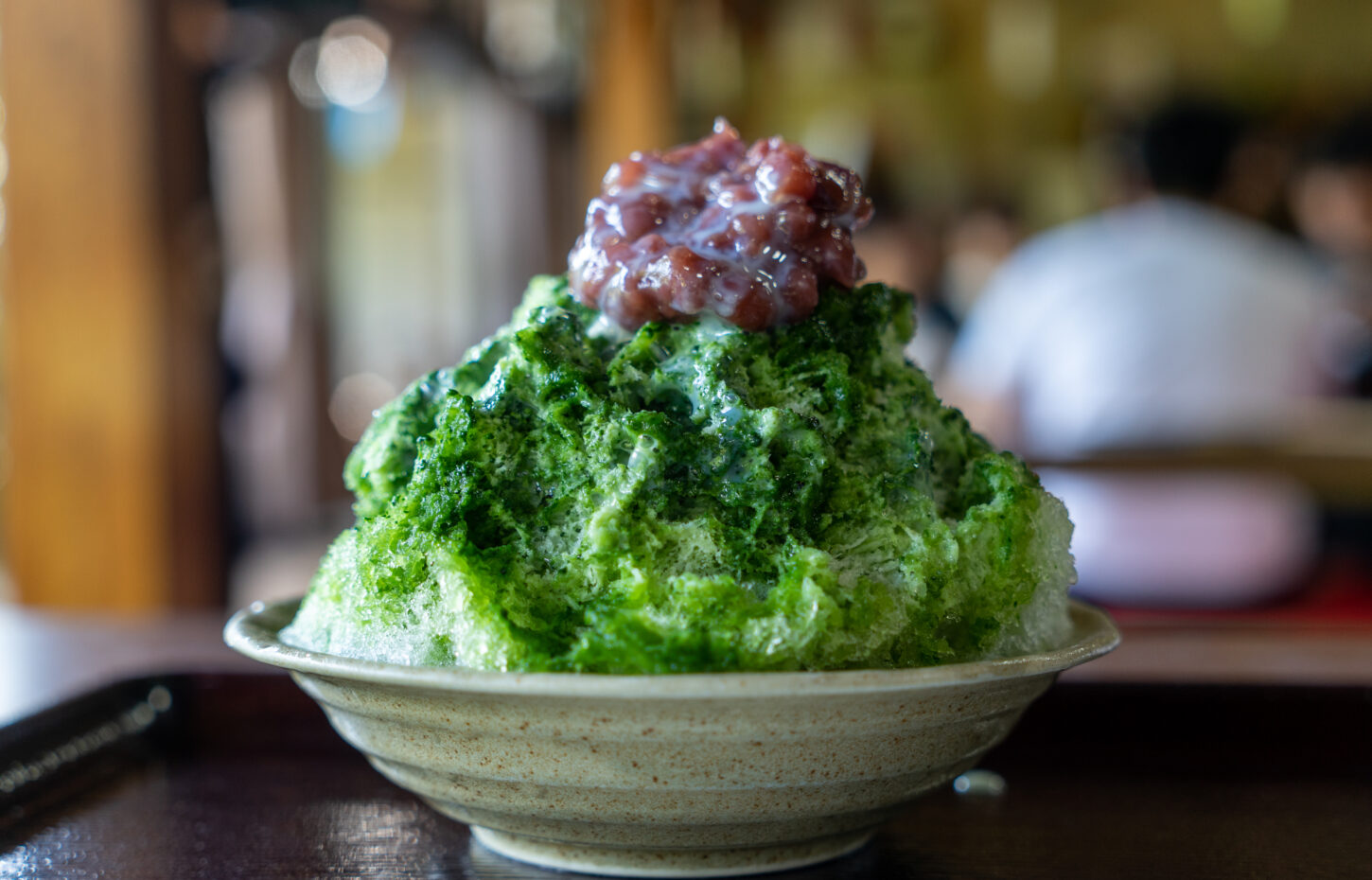
【Wish Come True】Complete List of Benefits at Senso-ji Temple! Also Introducing the Correct Worship Methods

3. The Source of Senso-ji’s Blessings: The Kannon Bodhisattva
Senso-ji’s power to grant all wishes is attributed to the boundless mercy of its principal deity, the Kannon Bodhisattva. This revered figure is believed to take on various forms to save those suffering in our world.
3.1 The Bodhisattva’s Immense Merit
The Kannon Bodhisattva listens to people’s wishes and suffering, offering salvation in the most fitting way. Its merit is detailed in the Kannon Sutra, which states that it grants all wishes, from protection against misfortune and healing from illness to business prosperity and good relationships. This is why Senso-ji is a place of worship for “shogan joju.”
3.2 The Legend of Senso-ji and the Kannon Bodhisattva
The origin of Senso-ji dates back to the year 628. Two brothers, Hinokuma Hamanari and Takenari, were fishing in the Miyato River (now the Sumida River) when they pulled a statue from the water. Their master, Hajino Manakachi, recognized it as a sacred Kannon Bodhisattva and enshrined it in a temple built from his own home. This event is considered the founding of Senso-ji. You can read more about this legend on the official Senso-ji website.
This statue is an “Absolute Secret Buddha,” meaning it is never shown to the public. This secrecy only deepens people’s faith. We offer our prayers to the Kannon Bodhisattva, giving thanks for its immense compassion at the temple’s main hall.
4. The Right Way to Pray at Senso-ji for Maximum Blessings
To receive blessings from the Kannon Bodhisattva, it’s important to pray with respect and according to the proper etiquette. Each step of the ritual is a way of showing reverence to the Bodhisattva, which will help your wishes be heard more clearly. Here is a step-by-step guide to the correct way to pray.
4.1 From Kaminarimon Gate to the Main Hall
Your visit begins at Kaminarimon, the main entrance gate. Bow to the statues of Fujin (the God of Wind) and Raijin (the God of Thunder) on either side. Beyond the gate is Nakamise-dori, one of Japan’s oldest shopping streets, which leads to Hozomon Gate. This gate houses two statues of the Kongo Rikishi (Nio) and a pair of giant straw sandals (waraji) on the back, which are meant to ward off evil. After passing through Hozomon, you are just steps away from the main hall where the Bodhisattva is enshrined.
4.2 Purifying Yourself at the Chozuya
Before entering the main hall, cleanse your body and mind at the Chozuya (purification fountain), located to the right after you pass through Hozomon. This is a crucial ritual to wash away the defilements of the secular world.
| Step | Action |
| 1 | With your right hand, take a ladle, fill it with water, and wash your left hand. |
| 2 | Switch the ladle to your left hand and wash your right hand. |
| 3 | Switch the ladle back to your right hand, pour some water into your left palm, and rinse your mouth. (Do not drink directly from the ladle for hygiene reasons). |
| 4 | Tilt the ladle to let the remaining water flow down the handle, cleaning it, and place it back where you found it. |
4.3 Cleansing with Incense at the Jokoro
After the Chozuya, head to the large incense burner (Jokoro) in front of the main hall. Many people light incense and wave the smoke over their bodies. This smoke, known as “koen,” is believed to have the power to heal ailments and purify the body and mind. By wafting the smoke over parts of your body that you wish to heal, you can receive the Bodhisattva’s blessings.
4.4 Praying at the Main Hall
Finally, you can pray to the Kannon Bodhisattva in the main hall. Please note that the prayer etiquette here is different from that of Shinto shrines. Calm your mind and offer your heartfelt thanks and wishes.
These instructions are also available on the official Senso-ji website under “Temple Guide.”
5. Unmissable Blessing Spots within the Grounds
Senso-ji’s blessings are not limited to the main hall. Its vast grounds are home to various halls dedicated to different deities, each known as a powerful spiritual spot. By visiting the halls that align with your wishes, you can receive even greater blessings.
5.1 Yogo-do: The Hall of Guardian Deities for Each Zodiac Sign
The Yogo-do is a hall dedicated to the Yogo-shu, a group of deities who assist the Kannon Bodhisattva. It also enshrines the guardian deity for each of the twelve zodiac signs. By praying to the deity that protects your birth year, you can receive more personal and powerful blessings.
| Zodiac Sign | Guardian Deity |
| Rat | Senju Kannon Bosatsu |
| Ox & Tiger | Kokuzo Bosatsu |
| Rabbit | Monju Bosatsu |
| Dragon & Snake | Fugen Bosatsu |
| Horse | Seishi Bosatsu |
| Sheep & Monkey | Dainichi Nyorai |
| Rooster | Fudo Myoo |
| Dog & Boar | Amida Nyorai |
Source: Senso-ji Official Website, Yogo-do and Rokkaku-do
5.2 Yakushi-do: Blessings for Healing from Illness
To the left of the main hall is the quiet Yakushi-do. As its name suggests, it is dedicated to the Yakushi Nyorai, the Buddha of medicine, and is highly revered for blessings of “byoki heiyu” (healing from illness) and “shintai kenzen” (good health). It’s a must-visit for anyone wishing for their own or a loved one’s health. To the left of the Yakushi-do is a statue known as “Obinzuru-sama.” It’s believed that if you gently rub a part of the statue that corresponds to an ailment on your own body, your pain will be eased.
5.3 Awashima-do: Blessings for Women’s Wishes
The Awashima-do is a hall said to grant all wishes for women. Its enshrined deity, Awashima Myojin, is particularly known for blessings related to gynecological health, safe childbirth, fertility, and skill in sewing. It is a reassuring presence for women with specific concerns. The hall is also known for its “Hari Kuyo-e” ceremony on February 8th, where old or broken needles are offered in a block of tofu to be honored.
5.4 Zenizuka Jizo-do: A Power Spot for Financial Luck
The Zenizuka Jizo-do is particularly famous as a power spot for financial fortune. Inside is a statue known as “Kankan Jizo.” After purifying the six Jizo statues with salt, offering incense and a candle, you gently strike a stone platform while making your wish. The “kankan” sound is said to signify that your wish will be granted. If you have a wish for business prosperity or financial matters, this is a great place to pray. People have been offering their prayers here and receiving blessings for generations.
6. Senso-ji Charms and Omikuji for Your Wishes
After your visit, it’s customary to get a charm (omamori) or a fortune slip (omikuji) to take home. Senso-ji offers a wide variety of charms, and its omikuji, known for having a high number of “bad luck” slips, holds a special meaning. Here’s how to choose the right charm and interpret your omikuji.
6.1 Recommended Charms by Blessing
The temple’s charm office offers charms for many different wishes. By choosing one that closely matches your wish and carrying it with you, you can feel the Kannon Bodhisattva’s blessings more deeply.
| Blessing | Charm Name | Features |
| Business Prosperity & Financial Luck | Kinryu no Mai Omamori | Inspired by Senso-ji’s Golden Dragon Dance, for business success and wealth. |
| Wish Fulfillment | Shogan Joju Omamori | A basic charm for the fulfillment of all wishes. |
| Protection from Misfortune & Bad Luck | Yakuyoke Omamori | Believed to ward off bad luck and bring a peaceful daily life. |
| Healing from Illness & Good Health | Shintai Kenzen Omamori | For recovery from illness and daily health, featuring a lotus flower design. |
| Academic Success & Passing Exams | Gakugyo Omamori | Supports academic improvement and passing exams. |
| Finding a Partner & Success in Love | Enmusubi Omamori | Recommended for those seeking a good relationship, designed to symbolize two hearts connecting. |
You can find these charms and others for safe travels or safe childbirth at the charm office on the west side of the main hall. Choose one while thinking of your heartfelt wish.
6.2 The Famous Senso-ji Omikuji
Senso-ji’s omikuji, known as “Kannon Hyakusen,” follows an ancient, traditional method, and is known for having a higher proportion of “bad luck” slips (kyo) than other temples. However, this is not a bad omen. A kyo at Senso-ji is seen as a sign of turning tides—meaning things can only get better from here—or as a message from the Bodhisattva to live a more mindful life and work harder. Even if you draw a kyo, it’s important to take its message to heart rather than be discouraged.
There is also proper etiquette for what to do with your omikuji:
- If you draw a good fortune slip (daikichi, kichi, etc.): This is a blessing from the Bodhisattva. It’s said that by keeping it with you, like a charm, its blessings will last.
- If you draw a bad fortune slip (kyo): Tie it to a designated spot within the temple grounds. This tradition is a way of entrusting your bad luck to the Bodhisattva, who will guide it toward a positive outcome.
Before drawing your omikuji, it’s polite to offer your prayers and thanks to the Bodhisattva. Why not try your luck on your next visit? You can find more information on the official Senso-ji website.
7. Summary
Senso-ji is a temple where you can receive the great blessing of “shogan joju,” the fulfillment of all wishes. The boundless compassion of the Kannon Bodhisattva responds to our most sincere prayers, from business prosperity to healing from illness and finding a partner. By following the proper prayer etiquette and visiting the spiritual spots that align with your wishes, you can receive the maximum blessings. We invite you to visit Senso-ji and convey your heartfelt wishes.











No comments yet.